Growing Vegetables in Containers
Tips on Getting Started
Growing vegetables in containers is a great option for gardeners with limited space. Here are some tips for container gardening and how to get started.
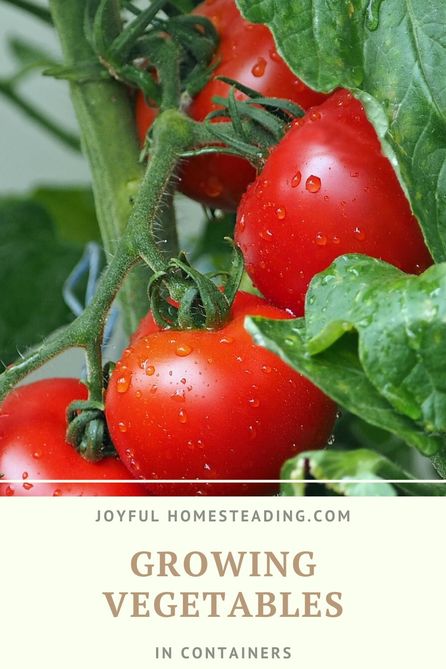
With the right garden container, you can grow just about anything on your balcony, rooftop or any other small space. The great thing about container gardening is you can use both floor-standing pots and hanging ones to maximize the growing space in your area.
So what can you use for a container? Anything! You will need drainage, but otherwise the sky is the limit.
You can be creative and have fun.
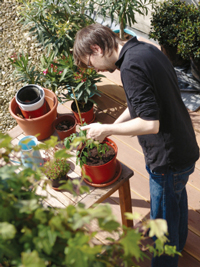
But some containers will work better than others. So here are some tips on finding the right pot for growing vegetables in containers.
Growing Vegetables in Containers
The Right Size and Type for the Job
The size of your container will depend on what you are growing and how often you plan to move your plants. If you want to grow tomatoes or other good-sized vegetables, you will need a much larger container, such as a half-barrel.
But if you plan to move your vegetables around, then go for a smaller size, such as a 5-gallon container.
Make sure it's not too heavy to lift; you don't want to injure your back. Also, if you are not good about watering your plants, then consider a handy self-watering container like the one pictured here. (You can find a self-watering container here.)
Proper Drainage
Good drainage is essential to successfully growing vegetables in containers. Without sufficient drainage, your plants will literally drown. But if your container is too porous, your plants won't get sufficient moisture. Look at factors such as the climate you live in, the type of plants you plan to grow (some need less water than others) and whether you are willing and able to water every day to determine the right garden container for you.
If your container doesn't have holes, make holes that are half an inch in diameter at the bottom. If you plan to set your pots on the ground, set them on blocks of some sort so the water can drain out. If your container has larger holes, line them with old newspapers to keep the soil from falling out.
Avoid Toxic Materials
Pressure-treated wood can leach toxins into the soil that can harm both your plants and you. When you're growing vegetables in containers that you plan to eat, you certainly don't want these toxins in your food.
The Right Material
Different pots are made from different materials. Each type has different benefits as well a problems. What material you choose will depend on your growing area, your climate and how often you will be able to water your containers. Here are some different options:
Plastic
Plastic is lightweight, can last a long time and is less likely to break than other materials. Plus, you can usually find plastic pots in all sorts of styles and colors. Some are even designed to resemble clay or wood. But be aware, that plastic is likely to fade over time. Also, if the containers are too light, your plants are likely to topple over with the next wind. You won't want top-heavy plants in a plastic container.
Wood
Wood is another good option for growing vegetables in containers. You can either make boxes yourself out of plywood or use whiskey barrels like this one. These containers look beautiful and tend to get better looking over time, but eventually they will rot. Also, wooden containers are heavy to move. If you have a bad back, a wooden container might not be the choice for you.
Unglazed Terra Cotta
The nice thing about unglazed terra cotta is the price. A terra cotta pot is are very reasonable and is a good choice for growing vegetables in containers if you are on a budget. They also provide great drainage and age well. But be aware that these pots can break easily and will freeze (and then crack) when exposed to winter weather. Plus, they are heavy. And, because they are porous, your plants will dry out more quickly, which means you will have to water more often.
Glazed Clay Pots
You can get these pots in any number of shapes and sizes, and some of these are quite beautiful. This is definitely the right garden container if you are looking for beauty as well as function. These pots are better at holding in the moisture than the clay pots, but again, they are heavy, can be easily broken and will crack when exposed to freezing temperatures.
Different Materials, Different Forms
Not only are pots made of different materials, but they come in different forms. Here are some examples you can use for growing vegetables in containers:
Self-watering Containers
These containers have a reservoir at the bottom that holds the water. Then a wick carries the water from the reservoir to the soil where it is needed (pretty nifty invention, huh?). These are great for areas where it is sunny or those hard to reach spots where you aren't as likely to water every day. Self-watering containers are also great if you tend to be away for a few days.
Window Boxes
Window boxes are beautiful to look at, but find deep boxes if you can. The deeper the box, the more soil it will hold and the less often you will need to water it. Better still, find window boxes that are also self-watering containers.
Hanging Baskets
While these are lovely for plants that drape naturally, such as petunias, they are also extremely handy for vegetables that vine, such as cucumbers and squash, and even strawberries.
Your hanging container can be as simple as a plastic container with wires - such as the type you get from greenhouses - to pots held in place with macrame hangers, to a hanging strawberry planter, such as the one pictured on the right. (You can find one here)

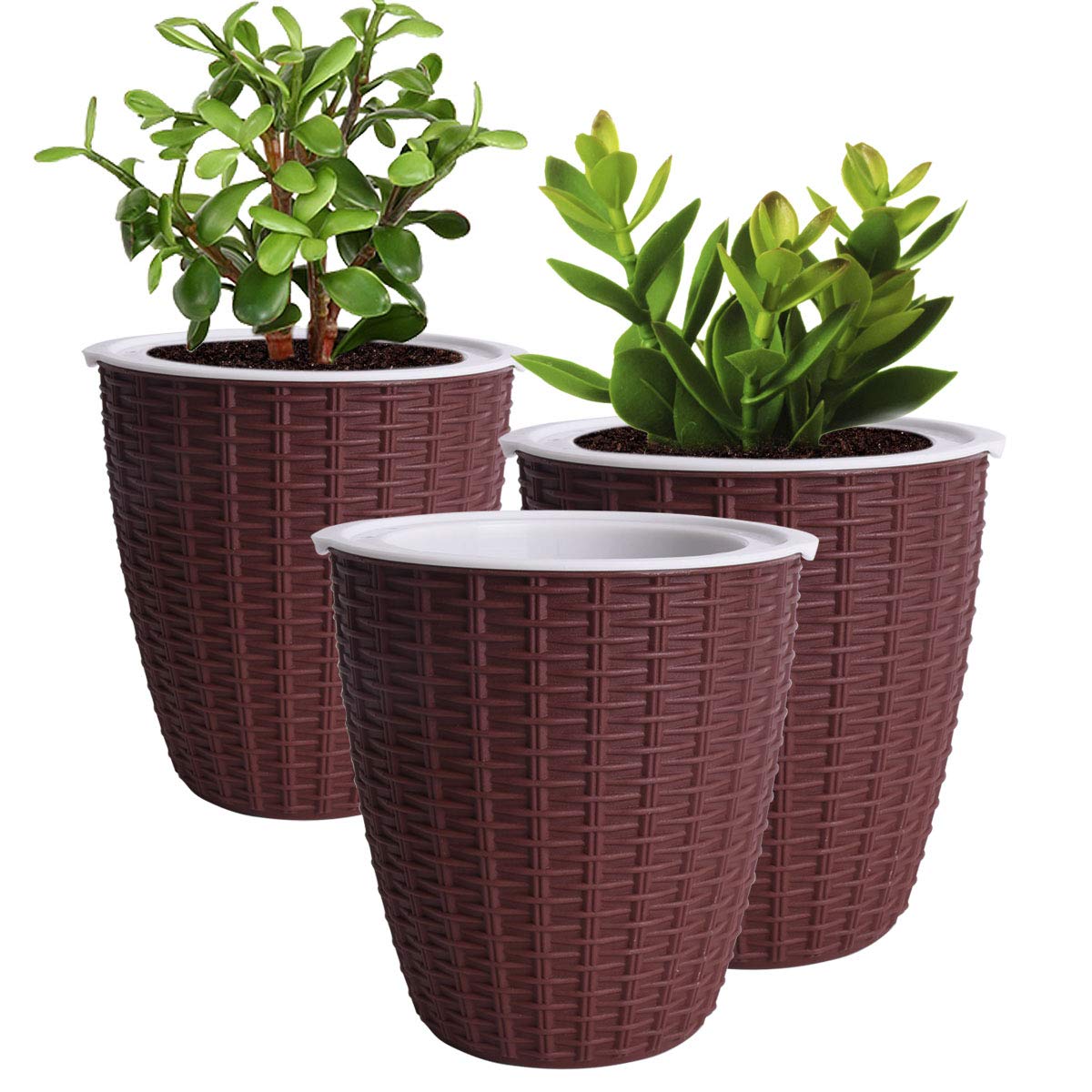
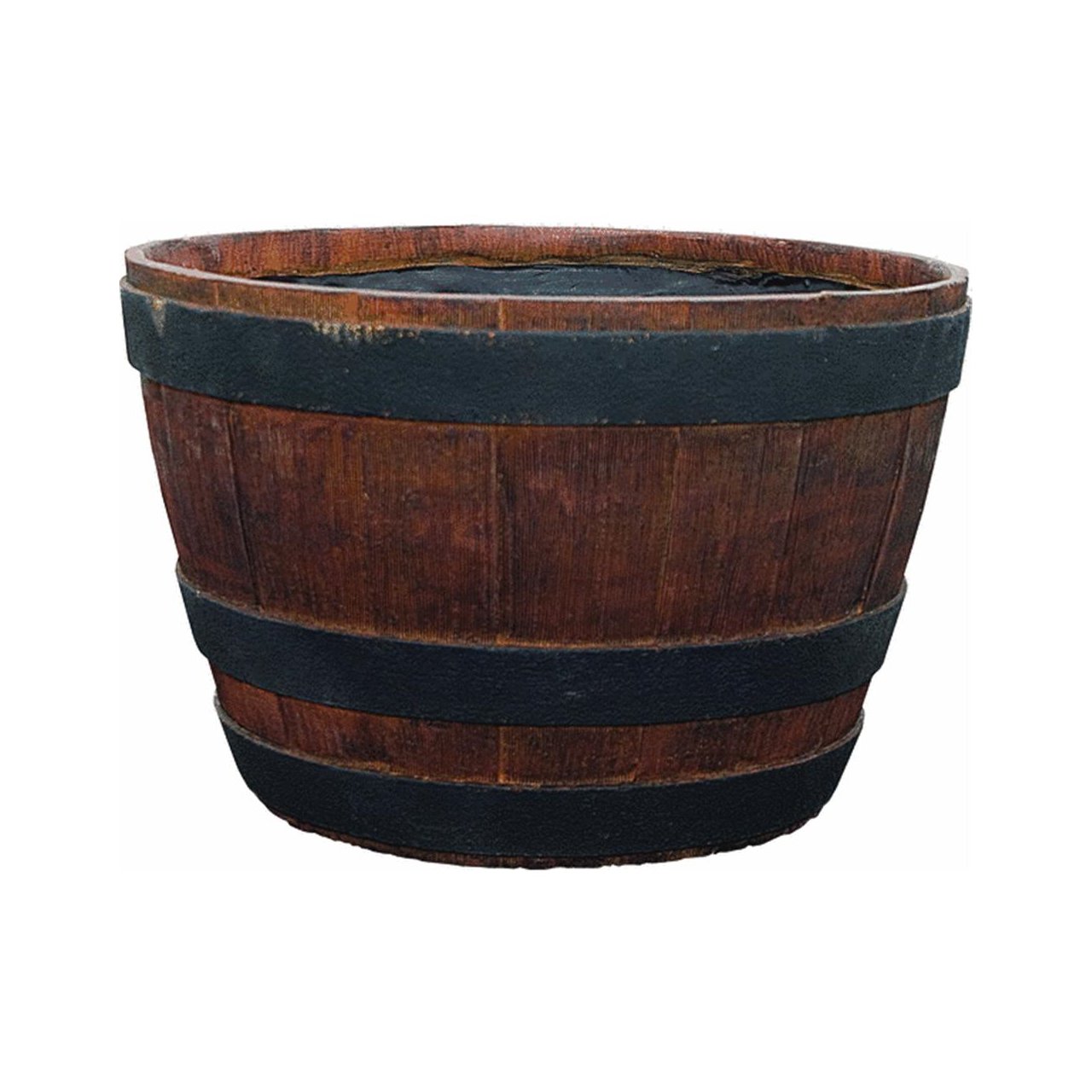
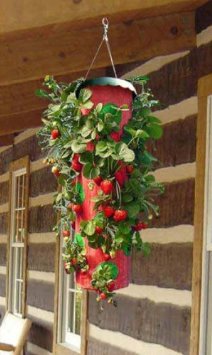






New! Comments
Have your say about what you just read! Leave me a comment in the box below.